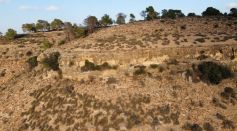ENVIRONMENT & CLIMATE

Inner Core Found Mushy and Liquid; Not Pure Metallic Ball Than First Thought
Rare 'Penis Plant' Blooms for the First Time in the Netherlands, The First in Europe After 20 Years
Ancient Human Species Identified: Study Introduces Homo Bodoensis, Who Lived in Africa 500,000 Years Ago
The Singing Lemur: Mammal Has Common Musical Characteristics Similar to Humans
Bryozoan Evolution from the Depths of the Ocean Solved; Study Says
Pee-Powered Renewable Energy Perfected; Scientists Show How Urine Can Help Purify Wastewater

Genetic Origins of China's Ancient Mummies Discovered in Tarim Basin
Brood Parasites Birds Exercise While Inside Their Eggs Before Hatching To Kill Nestmates

What is Solar Paint and Can it Revolutionize Green Architecture?
Human Debris: How Old Tires Endanger and Trap Hermit Crabs as it Pollutes the Waters
Tusk Evolution: Researchers Trace First Mammal Relative
Can Humans Finally Talk to Whales? Scientists Use AI to Try Decoding Whale Songs
Paleo-Fires Common in Antarctica 75 Million Years Ago, Burned Parts of Forests Home to Angiosperms

‘Tipping Points in the Climate System’ Better Understood, Predicted Through Data from Ancient Past
Most Popular

Hellfire Missile Video Reveals MQ-9 Reapers Being Used for Aerial Combat

Is the iPhone Air Eco-Friendly? Environmental Trade-Offs Explained

FDA Approves New Hypertension Notification Feature With Apple's WatchOS 26

Tesla Cybertruck Crashes Anti-ICE Protests in LA, Becomes Unlikely Symbol of Trump Controversy




